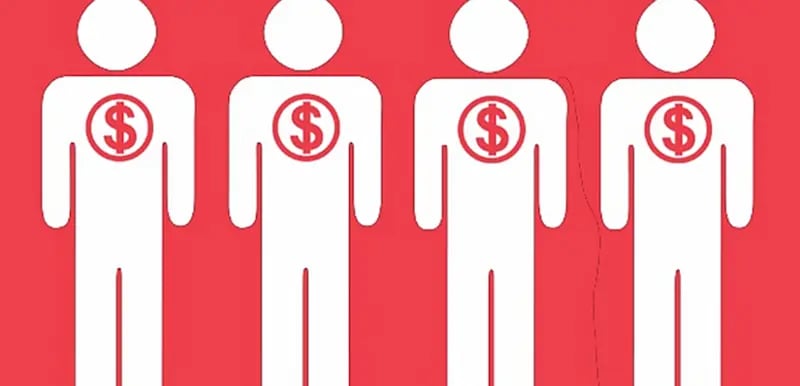
Personnel costs are the single biggest expense that collections departments face. Poorly trained, unmotivated and/or unproductive collectors can sap an organization’s profitability fast. Because collections professionals handle the lion’s share of daily collections activities, when a team underperforms, the pain is felt almost immediately.
But it doesn’t have to be this way. Your collections team might be in desperate need of a productivity increase. Or, your team performs well, but you believe they can do better. Whatever the case, this post is a step-by-step guide to improve debt collector productivity.
Step 1: Centralize Collections, and Commit Staff Full-Time
A centralized, fully committed collections staff is the first foundational piece for improved productivity. All staff need to be organized under one roof, answerable to one authority, and committed full-time to collections functions (not just helping out from another department).
Centralization ensures consistency and accountability. It scales and standardizes collections operations. And it makes it possible to repeat high levels of service consistently across customers over time (a process called “industrialization”). The result is better cost control and an enhanced ability to forecast personnel hours, profits, and financial liabilities.
How to Get Started:
Assign an overall owner for collections activities if one does not currently exist.
Implement collections training for all staff.
Assign formal titles for each collections job from Collections Manager to Skip Tracing Agent.
Clearly define and document all roles and responsibilities.
Organize the new centralized department for efficiency. For instance, one supervisor for 15 collectors; one trainer for 75 to 100 collectors.
Step 2: Draft a Capacity Plan
Productivity hinges on making the most out of the human capital at your disposal. Both under- and over-staffing hurt overall performance and create cost overruns—either through idle talent or underserved customers. It’s a necessity, not a luxury, to use mathematical forecasts to effectively determine how many staff are required for current and future workflows. Those forecasts should be expressed in a capacity plan.
How to Get Started:
- Employ regression modeling to link forecasting with capacity planning.
- Look at historical metrics to establish a benchmark for forecasts.
- Determine the right metrics to measure. These might be the number of accounts worked, account-to-collector ratios, seasonality, personnel shift records, etc.
Step 3: Determine How to Service Customers
There are two major ways to service customers: an account-level or a customer-level approach. Each may be used in different scenarios. Using the right one in the right situation increases staff productivity significantly:
- Account-level. This is when collectors handle each of a customer’s accounts separately; there are no views of a customer’s other delinquent accounts with the organization.
- Customer-level. This is when a customer’s other accounts with the bank are taken into consideration during the collections process.
Because customers often have multiple obligations across different types of banking products, each approach has validity depending on the situation.
How to Get Started:
Determine your goals. Are you looking to standardize effectiveness across the bank’s entire operations? Or, is this a customer base with very specialized circumstances?
Determine your priorities. Do you prize efficiency and collector productivity more than individual customer satisfaction for this product or customer group? Or vice versa?
Determine your approach. Account-level approaches are best for the early stages of consumer finance environments where the emphasis is on industrialization, amount collected, and collector productivity. Customer-level approaches, however, are a better fit for retail banking applications for specific products where customers might require special treatment—especially in the early phases.
Step 4: Determine Account Ownership Organization
There used to be only one way to manage accounts: assign them to a single collector from cradle to grave. This is called an ownership-focused approach. But there is now another option enabled by modern technology called a pool-focused approach, where account responsibilities are dynamically distributed to a pool of resources.
Matching specific customer scenarios to the right account ownership model means increased productivity both on the individual account and across the organization.
How to Get Started:
Compare the pros and cons of each approach to the account you’re servicing.
Understand there is room for both approaches. Ownership works well for corporate accounts or hard collections and litigation management. Pool works best for soft collection in retail environments.
Step 5: Create Defined Scripts
Each and every customer is different. But many customer interactions have common elements that can be documented and standardized. Doing so cuts down on collector prep time, increasing productivity. It also prevents duplicative collector efforts and unnecessary calls.
How to Get Started:
Draft defined scripts for each collection scenario your team encounters. Consider including the following common elements: A) An introduction; B) discovery phase; C) involvement phase; D) incentives to resolve obligations; E) appropriate replies to arguments.
Step 6: Motivate Collectors
After a rigorous education, your collectors will be skilled, valuable professionals if they aren’t already. But they don’t just need the know-how; they also need the proper motivation to excel daily.
Opportunities abound for daily feedback and improvement across areas like technology usage, product knowledge, compliance with strategy, and communication skills—if you implement the right incentives.
How to Get Started:
Implement simple, appealing incentive schemes that stress continuous improvement and dynamic goals using the examples below.
Step 7: Implement a Specialized Collections Software Solution
A specialized collections software solution is the number one way to achieve each of the above goals in a single, streamlined system.
